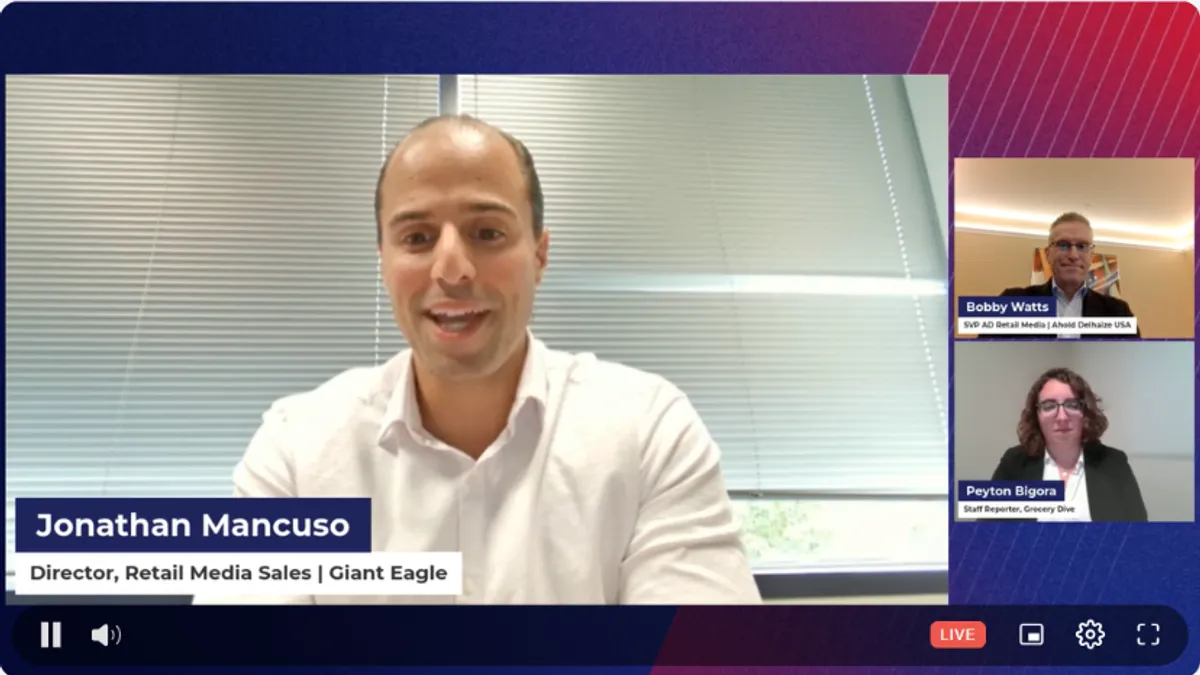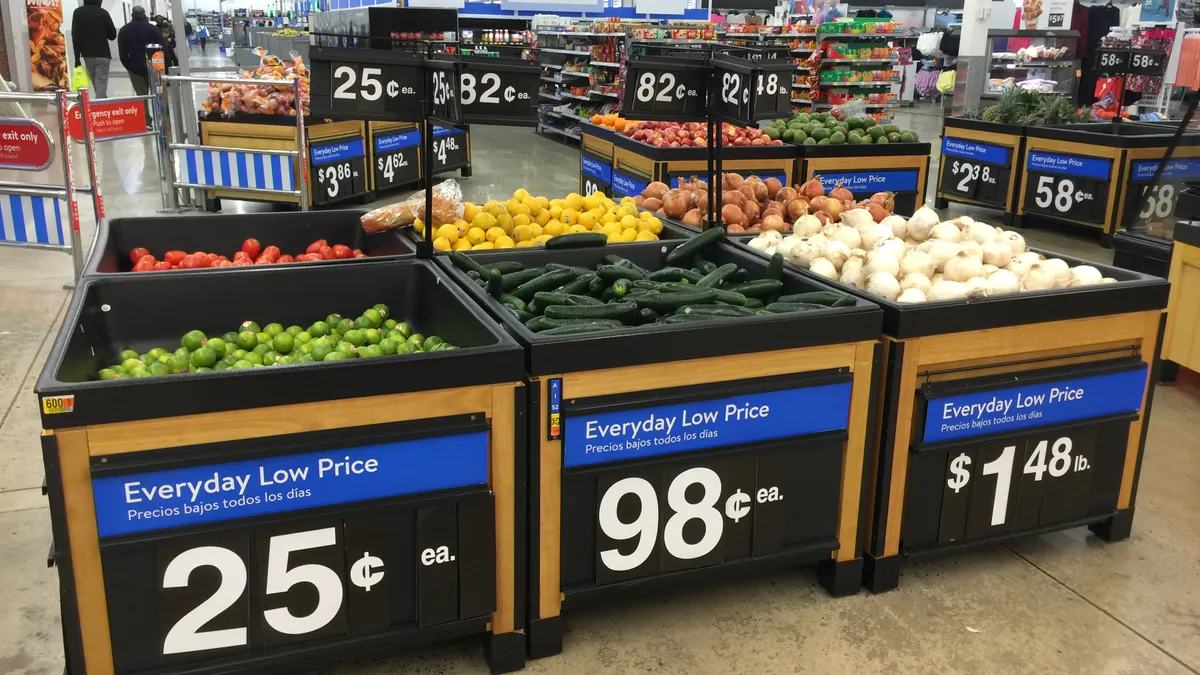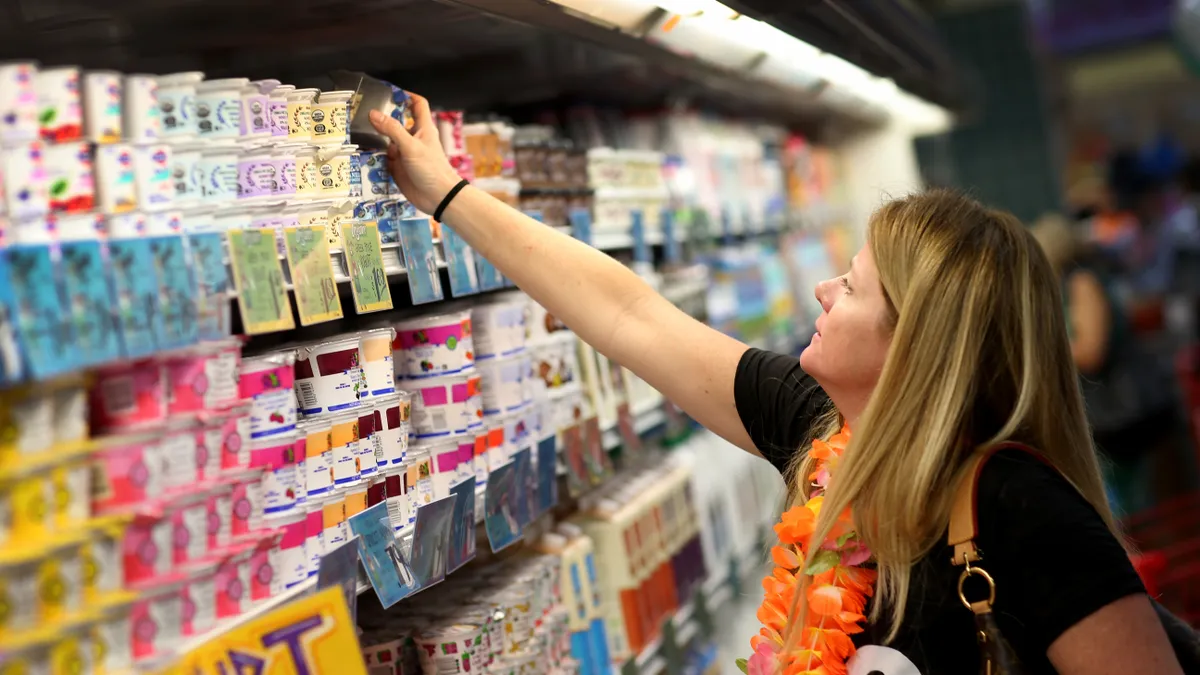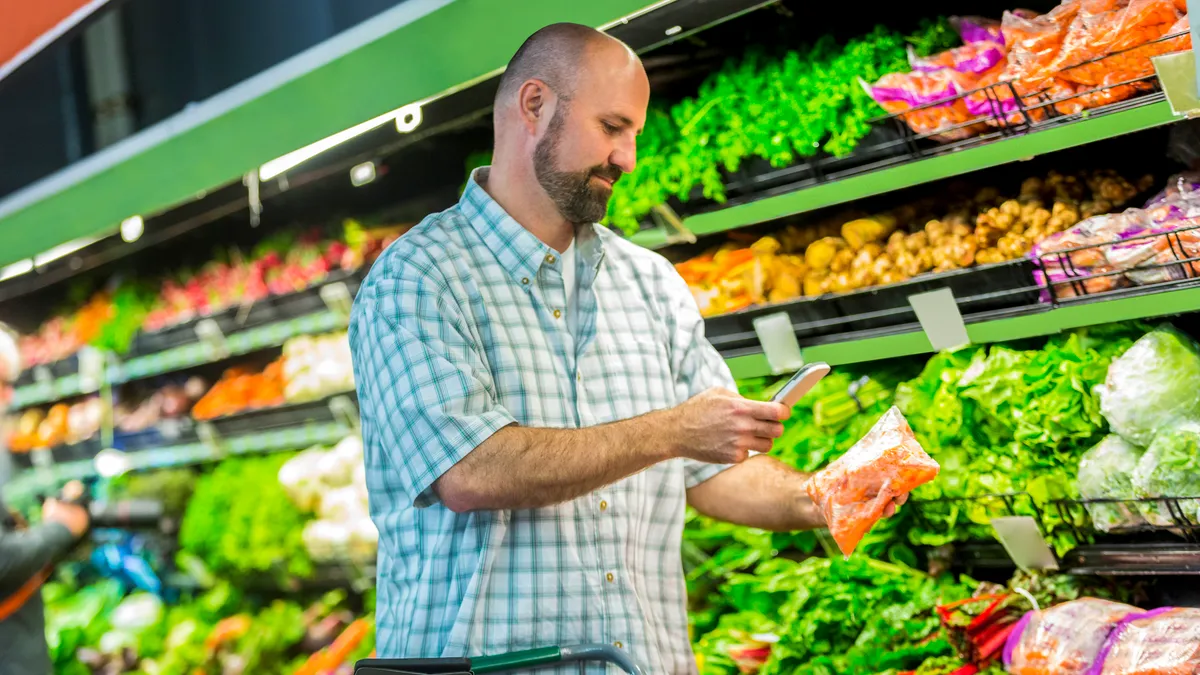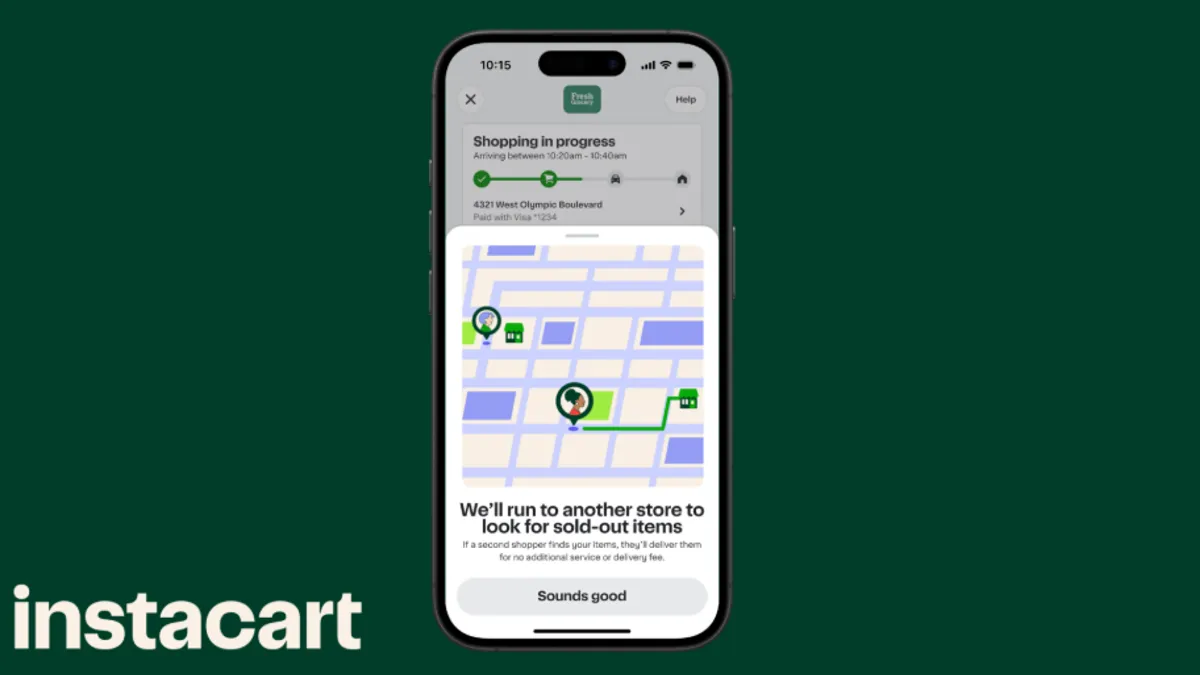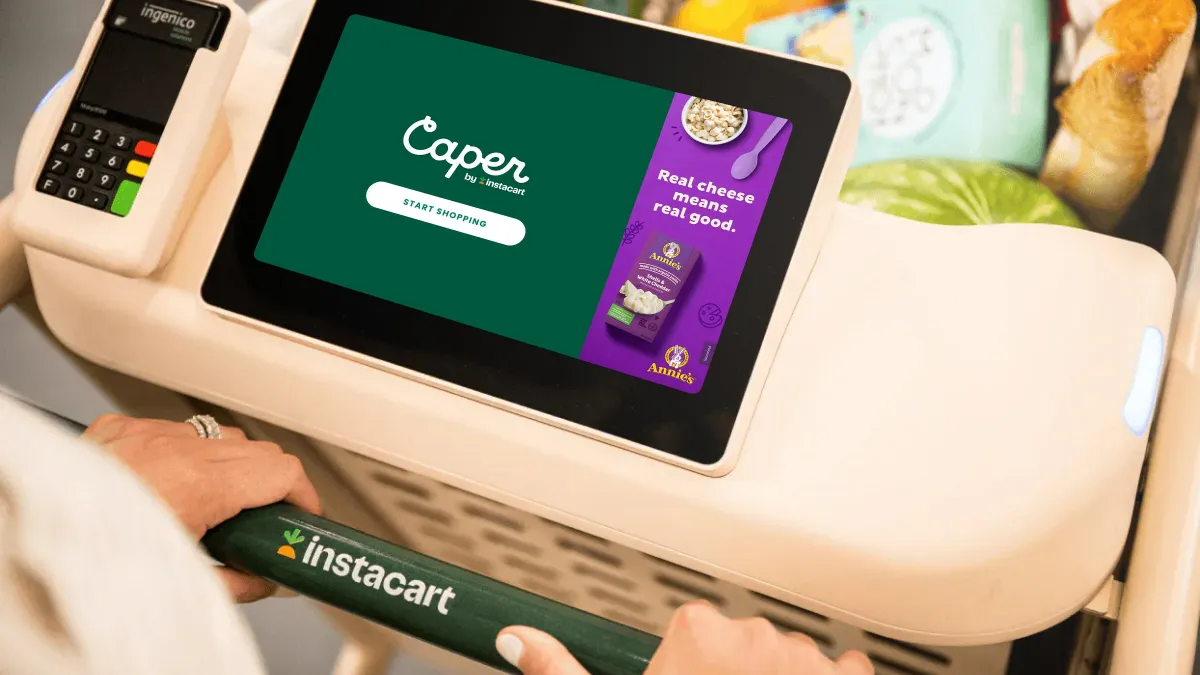Editor’s note: This article draws on insights from a Grocery Dive and Marketing Dive co-hosted virtual event panel. You can register here to watch a replay of the full event, “How to Navigate and Capitalize on Retail Media Networks.”
As retail media blooms in the grocery industry, advertising raises new challenges and opportunities different from selling groceries, executives from Ahold Delhaize USA’s retail media and Giant Eagle stressed Wednesday during Grocery Dive and Marketing Dive’s co-hosted virtual event, “How to Navigate and Capitalize on Retail Media Networks.”
When it comes to retail media, Bobby Watts, senior vice president of AD Retail Media for Ahold Delhaize, follows the slogan, “It’s not a banana.” Compared to grocery sales, retail media poses different margins, expenses and costs, he said.
As grocers embark on retail media efforts, Watts and Jonathan Mancuso, director of real media sales for Giant Eagle’s Leap Media Group, pulled back the curtain on their respective companies’ strategies.
Building the case for in-house retail media
Both Watts and Mancuso shared the benefits of running retail media in-house. Giant Eagle launched Leaplast year while the year prior Ahold Delhaize announced plans to transition its retail media business to a fully in-house operation, which is now AD Retail Media.
“We like the approach of owning our own narrative,” Mancuso said.
Though Giant Eagle is a regional grocer, it can make quick pivots in key verticals that make the grocer unique, Mancuso said. Leveraging trust in its workers is key, Mancuso said, adding that it’s easier to take calculated risks when investing in yourself than a third party with different fee structures.
“It’s not necessarily something where we said, ‘We’re going to launch Leap Retail Media Group.’ We said we’re going to take IT and we’re going to take our marketing team [and] our merchandising team and we’re going to come together and formulate what this looks like together. And that led to I think a much more effective and organic growth.”
Meanwhile, AD Retail Media includes executives with a mix of backgrounds, from people with decades of experience to those newer to the space but who bring merchandising and e-commerce experience, Watts said.
The diversity of AD Retail Media’s team is helping it build an “omnichannel activation” for advertisers, Watts said.
But for retail media to succeed, that team has to help the broader organization understand what it’s doing and buy in on its strategy.
“Being a media publisher is different than selling groceries and so it takes a bit to get the organization to come along and understand that and then understand how they can apply that to their business specifically in the merchandising world,” Watts said.
Balancing in-store and online efforts
While online advertising has featured on grocers’ websites and apps for years, both Watts and Mancuso said their respective companies are in the “infancy” phase of in-store retail media.
In-store media holds a lot of promise for retailers and has a lot of potential access points, from smart cart advertisements to digital screens to in-app messaging. But Watts said he doesn’t want to overwhelm shoppers.
“I think sometimes as a retail media network we get a bad rap that we’re trying to turn the stores into Times Square,” Watts said.
Digital screens are “not cheap” and it’s important that they are located in prime positions to both benefit the advertisers and the customer experience, Watts said.
Ahold Delhaize is expanding its partnership with Vibenomics and in-store audio to create a “sight and sound” approach in-store, Watts said. AD Retail Media is working to figure out how to connect retail media with the retailer’s apps, Watts said.
AD Retail Media has capitalized on its connection to Ahold Delhaize’s global footprint and expertise. It regularly holds knowledge-sharing sessions on retail media with its European counterparts, Watts said: “We knew the U.S. was mature in some places like off-site [media], social media versus where Europe was mature in places like digital out of home or in-store.”
Giant Eagle has a vendor partner that produces on-shelf signage, Mancuso said, noting that signage and audio are currently the retailer’s extent of in-store retail media.
“We are ironically at the perfect time, I would argue for our business, to explore in-store [retail media],” Mancuso said, noting that the Interactive Advertising Bureau has newly released industry standards for in-store retail media.
Meanwhile at GetGo, the convenience store chain the retailer is selling to Couche-Tard, the company has internally powered digital screens that display discounts, special offers and seasonal trends messaging, Mancuso said.
Getting on the standardization bandwagon early
Both Mancuso and Watts stressed the importance of following retail media standards. AD Retail Media follows IAB standards “as closely as we can,” Watts said, adding that the industry might take a while to catch up on implementing standardization.
Mancuso noted that adhering to specific metrics and measurements requires investments in labor and technology infrastructures that aren’t easy to stand up overnight.
While IAB is providing standardization guidelines, Mancuso said that agencies representing advertisers are also often controlling the conversation around metrics and measurements.
“I would imagine from the perspective of the advertiser … there is a retail media network in just about every business for just about every service,” Mancuso said.
Going forward, they see their work to establish in-house operations will help their retail media networks stand out to advertisers.
Watts said he doesn’t want to see retail as strictly a driver for return on ad spend or incremental volume.
Instead, retail media “should be rooted in: what is the business problem you’re trying to solve? Let’s lead with a data-led strategy,” and then follow up with measurements to see how campaigns are performing, Watts said.



